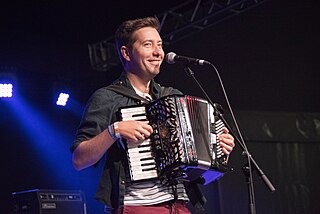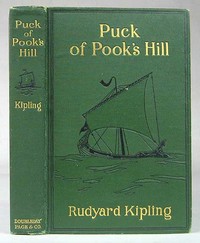
A pasty is a British baked pastry, a traditional variety of which is particularly associated with Cornwall, South West England, but has spread all over the British Isles. It is made by placing an uncooked filling, typically meat and vegetables, on one half of a flat shortcrust pastry circle, folding the pastry in half to wrap the filling in a semicircle and crimping the curved edge to form a seal before baking.

Alfred Leslie Rowse was a British historian and writer, best known for his work on Elizabethan England and books relating to Cornwall.

Stargazy pie is a Cornish dish made of baked pilchards (sardines), along with eggs and potatoes, covered with a pastry crust. Although there are a few variations using other types of fish, the unique feature of stargazy pie is fish heads protruding through the crust, so that they appear to be gazing to the stars.

Charles Stanley Causley CBE FRSL was a British poet, school teacher and writer. His work is often noted for its simplicity and directness as well as its associations with folklore, legends and magic, especially when linked to his native Cornwall.
Trina Schart Hyman was an American illustrator of children's books. She illustrated over 150 books, including fairy tales and Arthurian legends. She won the 1985 Caldecott Medal for U.S. picture book illustration, recognizing Saint George and the Dragon, retold by Margaret Hodges.

The culture of Cornwall forms part of the culture of the United Kingdom, but has distinct customs, traditions and peculiarities. Cornwall has many strong local traditions. After many years of decline, Cornish culture has undergone a strong revival, and many groups exist to promote Cornwall's culture and language today.
Charles Gordon Henderson was a historian and antiquarian of Cornwall.

Cornish literature refers to written works in the Cornish language. The earliest surviving texts are in verse and date from the 14th century. There are virtually none from the 18th and 19th centuries but writing in revived forms of Cornish began in the early 20th century.
Donald Michael Thomas, is a British poet, translator, novelist, editor, biographer and playwright. His work has been translated into 30 languages.
Robert Morton Nance (1873–1959) was a British writer and leading authority on the Cornish language, a nautical archaeologist, and joint founder of the Old Cornwall Society.

Brenda Wootton was a British folk singer and poet and was seen as an ambassador for Cornish tradition and culture in all the Celtic nations and as far as Australia and Canada.

Melor was a 10th-century Breton saint who, in England, was venerated in Cornwall and at Amesbury Abbey, Wiltshire, which claimed some of his relics.

Nevil or Neville Northey Burnard was a 19th century English sculptor best known for his portrait figures.

Jim Causley is an English folk singer, songwriter, and musician from Devon who specializes in the traditional songs and music of the West Country. Journalist Colin Irwin has called him "the finest singer of his generation".

Puck of Pook's Hill is a fantasy book by Rudyard Kipling, published in 1906, containing a series of short stories set in different periods of English history. It can count both as historical fantasy – since some of the stories told of the past have clear magical elements, and as contemporary fantasy – since it depicts a magical being active and practising his magic in the England of the early 1900s when the book was written.

Cornish cuisine encompasses the cooking styles, traditions and recipes associated with Cornwall and the Cornish people. It has been heavily influenced by the geography of the county as well as its social history.

Squab pie is a traditional dish from South West England, with early records showing it was associated with Cornwall, Devon and Gloucestershire. Although the name suggests it contains squab, in fact it contains mutton and apples. The pie was eaten around the world in the 1900s, though outside South West England it generally did contain pigeon.

The Mermaid of Zennor is a popular Cornish folk tale that was first recorded by the Cornish folklorist William Bottrell in 1873. The legend has inspired works of poetry, literature and art.

Stanley Wilfred Simmonds ARCA was a British painter and art teacher.
Samuel James Cornish was Boston’s first poet laureate. He was associated with the Black Arts Movement. He taught at Emerson College.















